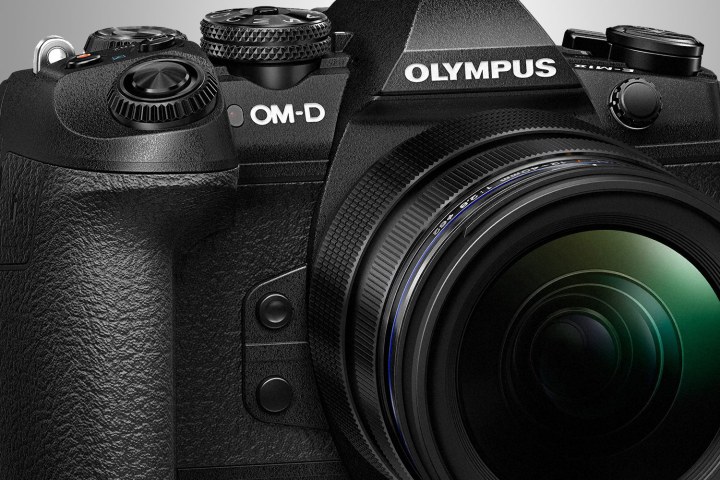
The Four Thirds sensor will get a resolution bump to 20.4 megapixels and it foregoes the traditional antialiasing filter, which should make for a very detailed output, though with the potential risk of incurring moiré when photographing fine patterns.
Where things really get interesting, however, is with the new TruePic VIII processor, which offers a 3.5-times improvement in processing power and will let the E-M1 Mark II shoot full-resolution bursts at up to 60 frames per second and 18 with continuous autofocus.
Complimenting the high-shooting speed is advanced Dual Fast autofocus, which automatically selects between contrast and phase detection depending on a variety of factors, from lighting conditions to lens type. Olympus claims continuous tracking AF performance has been “dramatically” improved.
The camera will get a new Pro Capture Mode, which Olympus states will provide lag-free shooting to enable capture of split-second moments. When enabled, it starts taking photos as soon as the shutter is halfway pressed, and saves the last 14 images up to the shutter being fully depressed.
The E-M1 Mark II will also get the high-end features introduced with the E-M5 Mark II, including the five-axis stabilization system and High-Res Shot mode, which will output a 50-megapixel file.
When used with the new M.Zuiko ED 12-100mm f/4 IS Pro — which was also announced Monday — the combined body and lens stabilization systems are good for 6.5 stops of shake reduction.
The E-M1 Mark II is built with the professional photographer in mind and includes dual SD card slots, with UHS-II support in just the first slot. Like its predecessor, the camera body will be fully sealed against dust and weather and is freeze-proof down to 14 degrees. The shutter mechanism is more durable, tested for 200,000 actuations while a new battery offers 37 percent more capacity.
On the video side, Olympus will make the jump to 4K with the E-M1 Mark II. It will move beyond Ultra HD to support the Digital Cinema Initiatives (DCI) standard frame size of 4,096 x 2,060 pixels, slightly wider than UHD. It will record 4K at 24 frames per second at a bitrate of up to 237 megabits per second. The sensor readout speed has been improved by a factor of three and Olympus claims this leads to an effective suppression of the dreaded jello-cam effect associated with rolling shutters.
Overall, this is a significant effort by Olympus regarding professional mirrorless cameras and represents a large jump for the company in the world of video production.
As far as the pricing and availability goes, despite not being announced initially, Olympus has since announced that the OM-D E-M1 Mark II will go on sale towards the end of December 2016 and will retail for $1999.
Updated 11/2 by Anthony Thurston to account for newly announced pricing and availability information.
Editors' Recommendations
- Olympus E-M1 Mark III vs. Olympus E-M1 Mark II: Is the upgrade worth it?
- New teleconverter from Olympus doubles the reach of its longest lenses




